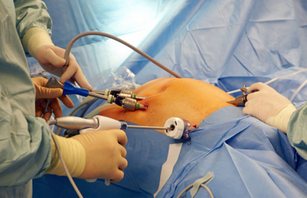Why should hernia be operated?
According to etiopathogenesis:
•Hernia Congenita — It appears during fetal development and after birth is manifested. The most common congenital hernias in infants are indirect inguinal hernia and umbilical hernia.
•Hernia Aquisita - Occurs in different periods of human life
According to localization:
•diaphragmatic
•poster-lateral (lumbo-costal) of Bohdalek
•parasternal of Morgan
•hiatal
•axial
•paraesophageal
•sliding
•inguinal
•indirect
•direct
•femoral
•umbilical
•Spiegel
•postoperative
•muscle
•disc
According to the presence of hernia bag:
•true — with hernia bag
•false — without hernia bag
There are various clinical classifications of inguinal and femoral hernias. One of the most common is that of Nyhus, according to which the hernia in the groin are classified into four types:
•Type 1 Indirect hernia without expanding the hernia ring.
•Type 2 Indirect hernia with expanding hernia ring and maintained back wall of the inguinal canal
•Type 3 Hernias with a defect in the back wall of the inguinal canal.
•Type 3a Direct hernia with defect in the back wall.
•Type 3b Indirect hernia with defect in the back wall. Sliding hernia.
•Type 3c Femoral (thigh) hernia.
•Type 4 Recurrent hernia.
•Type 4a Direct.
•Type 4b Indirect.
•Type 4c Femoral.
•Type 4d Combined.
Hernia is one of the most mysterious diseases with very strange pathology.
How does hernia occur?
Strange, of course - suddenly one internal organ appears just under the skin. Such behavior of one's own body is often inexplicable. And it is not a problem that can be neglected. This disease requires serious attitude – full examination and if necessary - surgery.
Where does hernia occur?
Hernia appears on the spine (herniated disc), the diaphragm (diaphragmatic, hiatal hernia), the abdominal wall or in ports of the abdominal cavity. Very common is the umbilical hernia in places where there have been previous signs of trauma or previous surgery.
Can traumas be the cause of the problem?
Very rare. The main reason is always in the connective tissue. It expands and breaks under the pressure of internal organs. Under the influence of the internal pressure organs begin to "drill" their way and often go just under the skin.
Hernias can occur as a result of a congenital defect, and the reason for the umbilical hernia is often obesity, and in some cases pregnancy. In these cases, it is enough just a quick bag lifting for the hernia to appear. And the one, which occurs on the spine, nearly one hundred percent is the result of trauma.
Can hernia go away?
No, it can not! Another issue is that in its early stages it can be unnoticed, not bothering and it is possible to keep it that way for years. In such cases, however, there is always a risk of complications. Treatment at this stage can only be radical.
Does physical therapy help?
Conservative treatment can only help with herniated disc. There are special motor and physiotherapy methods for modification of muscle tension in the spine and reduce the load on the spine. This is done to remove the effects, rather than the causes that provoke the development of hernia.
If hernia is not treated, can it lead to complications?
Often hernia does not remind for itself for years, but the risk to manifest itself in its worst form always exists. It is enough to make one false move (heavy physical work, lifting weights) and the hernia will appear.
Is the surgery heavy?
It is not so heavy to postpone it. Only a doctor can discuss this issue, because at some point it may be that there is no need to lie on the operating table. It all depends on the state of the hernia.
Classical operation is cutting the skin around the hernia sac, eliminating problems and strengthening the weak spot by sewing the tissue. Nowadays, surgeons have switched to this strengthening with plastic materials, which helps to significantly reduce the risk of recurrence.
Traditional hernia operation continues from 30 to 60 minutes. Hospitalization is about 3-4 days, and the time of recovery continues for about two months.
Today, the operation of removing the hernia can be done in a much more painless method - laparoscopy. After such operation, the patient can leave the hospital after a day, while the recovery is within 5-7 days.

Have a question? We look forward to hearing from you!
Send InquiryContacts
1407 Sofia
Vita Hospital (Second Building ) - ¹ 10 Filip Kutev Str.,
Phones: 02 45 22 000
Å-mail: [email protected]
